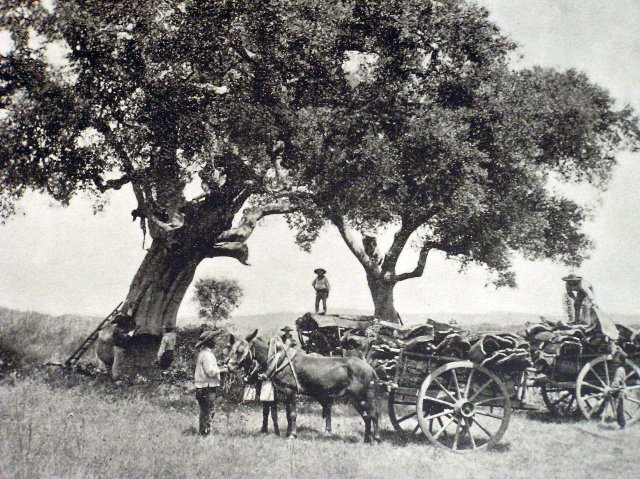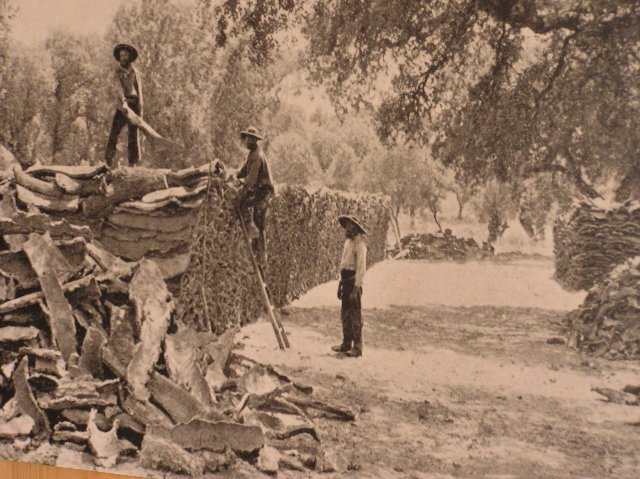The hystory of cork
I want to tell you some interesting hystory about the material with which I work
this is my first article in English. Sorry for my mistakes
Dom Perignon

Despite the many different applications, cork always been a natural and environmentally friendly material, that was used by major wine producers. However, throughout history there have been numerous references to its use not only for corking bottles, but also for other various purposes.
In the year 3000 BC cork was used in fishing gear in China, Egypt, Babylon and Persia. In Italy, since the 4th century BC, it was used for making floats, stoppers for casks, women's footwear and roofing materials. In the same period, the Greek philosopher Theophrastus first mentioned the cork oak in his botanical treatises like a miracle: "Once removed the bark, cork recovers it."
Wine and cork - it's two products, which for a long time go hand in hand. Proof of this is an amphora of the 1st century BC, found in Ephesus: it not only was sealed with cork, but also still contained wine. Later, in the 1st century AD, the Roman naturalist Pliny the Elder referred to the cork oak in his famous "Natural History." He explained that in Greece the trees were very popular and were considered a symbol of freedom and honor, and for that reason only the priests could cut them. In the same paper we read that cork oaks were dedicated to the god Jupiter. Their leaves and branches are used for garlands, handing in the award winning athletes. The Roman city of Pompeii, which was destroyed after the eruption of Vesuvius, wine amphorae sealed with cork have also been found.
The first agrarian law, which protects the cork forests, was adopted in the early 13th century, in Portugal in 1209. Later, in the era of great geographical discoveries, the builders of the Portuguese ships and caravels that sailed in search of new worlds used cork oak wood for those parts of the ship that were most susceptible to destruction during inclement weather.
According to legend, in the 18th century French monk named Dom Perignon first began to clog the wine cork. He believed that it helps to keep the effervescence and taste of champagne. This idea he borrowed from Spanish travelers who sealed jar with a cork. But George Taber, author of «To Cork or Not to Cork», and other historians dispute this story. Taber brings evidence that the Duke of Bedford used cork back in 1665, a few years before Dom Perignon was engaged in winemaking at the abbey Hautvillers. However, the name of Dom Perignon has always been associated with champagne and cork.
Dom Perignon

Historians have sufficient information on how the cork has been used in the 18th century, thanks in part to Louis XV, who promulgated a law on how to pour champagne. At that time, stoppers were driven into the bottle by hand and tied with three laces for strength. About this edict of Louis Becky Sue Epstein wrote in his book «Champagne: A Global History». Epstein noted that, despite its strength bottle can shoot and because of this champagne has a reputation as a "high-risk drink" and it is called the "Wine of the devil." Even after centuries people wore gauze masks to protect eyes from the cork. The famous vintner Thomas George Shaw in the 19th century wrote: "I know a wine cellar, where three workers were left without an eye."
Today, corks are made from the bark, glue and silicone. This shapeless mass, like a candy fed under pressure into the machine, and then in the neck of the bottle, and caught by wire for safety. This process gives to cork the mushroom shape.
cork extraction

In 19th century France, Italy and Tunisia have regularly invested in the planting of cork forests. This century has been marked by significant progress cork industry:
The first machine was patented for the manufacture of bottles, and in 1830 - a machine for corking bottles.
In the next century-producing countries began to invest more in the development of the cork industry.
In 1903, first appeared cork agglomerate. A few years later were registered patents for the use of cork in transmission belt and tire. During the Second World War, this material was used in the production of military equipment.
cork extraction

In 1950, the American company produced the first agglomerated cork tiles coated vinyl film. Later were designed the international standards for the cork industry. The International Code of Cork Stopper Manufacturing Practice, a key document for quality control in the production of cork wine closures have been developed. This document describes and regulates the cork manufacturing processes and is still constantly updated, following the increasing quality requirements.
In the 21st century, the cork remains popular environmentally-friendly material. Using environmentally-recyclable and biodegradable materials is increasing, especially in areas such as innovative design and Eco-Design. Increasingly, a new generation of artists seek to create everyday objects (tables, chairs, kitchen furniture, leisure ...) of materials which are one hundred per cent natural origin.
Excited to have you @medvejatin!
Steemit is growing every day!
thanks to you!
Welcome @medvejatin:-) What does "this" refer to?
wellcome
Great to have you here!
Here are some tips if you're not aware of already:
#NSFWor for#testonly